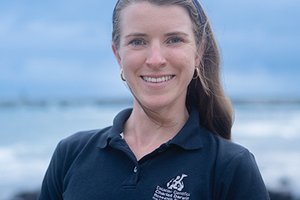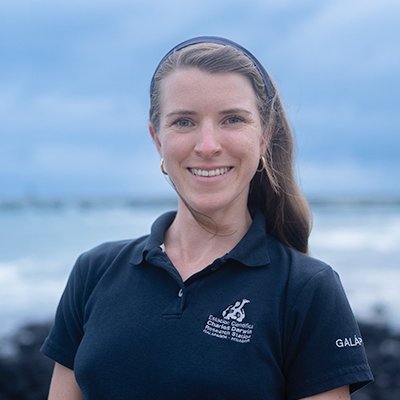Every year, our Marine Bird Conservation team embarks on an expedition to Española Island to monitor the population and health of the waved albatross. With an estimated 35,000 birds breeding exclusively on this island, they are particularly vulnerable to threats like pathogens and invasive species. This annual expedition is therefore essential for protecting these unique birds.
DEPARTURE
At 10:00 PM, the team meets on the dock in Puerto Ayora, surrounded by multiple boxes of field equipment. I am ecstatic and lightheaded at the same time; the latter courtesy of the seasickness pill I took earlier to prepare for the voyage. As a fundraiser at the Charles Darwin Foundation (CDF), I usually don’t get to join expeditions like this and while I am beyond excited to finally experience the work first-hand, I can’t help but wonder if my stomach will handle it, given my serious seasickness episodes in the past.
Our destination: Española Island. Our mission: to study the populations and health of the iconic waved albatross, along with the blue-footed booby, Nazca booby, and swallow-tailed gull, particularly in response to the Avian Influenza detected in the Galapagos in September 2023.
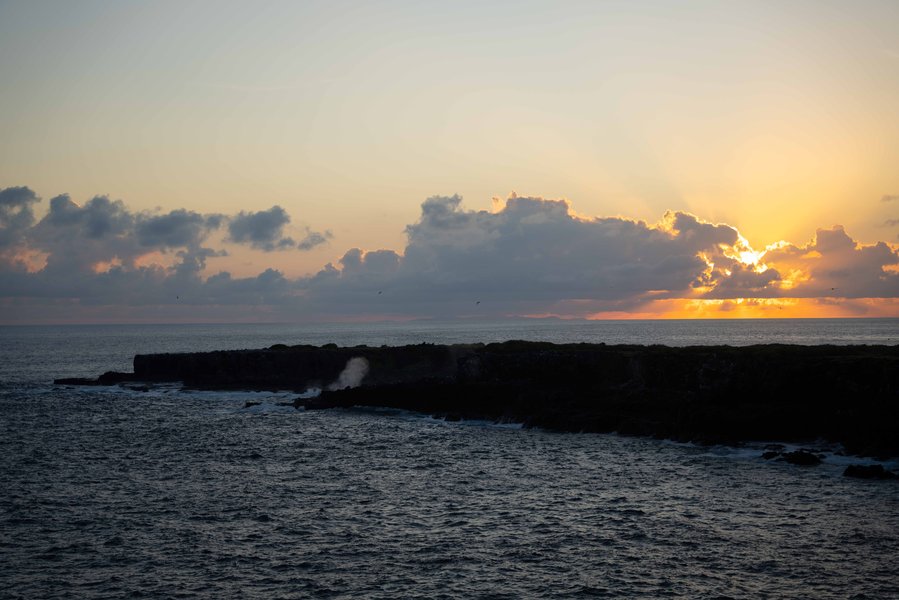
Leading the six-member team of CDF staff and Galapagos National Park rangers is Gustavo Jiménez-Uzcátegui, CDF’s Principal Investigator of the Marine Bird Conservation Program, and a seasoned Wildlife Veterinarian and Marine Ornithologist.
The crew awaits us on board the Galapagos National Park vessel. With a loud bang, the anchor is raised around 1:00 AM, and we set sail toward Punta Suarez. Luckily, the seasickness pill works like a charm and I sleep soundly through the journey.
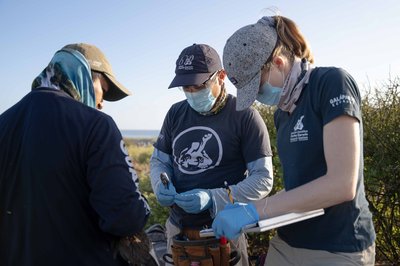
THE STUDY
Expedition days start early with a hearty breakfast at 5:30 AM, preparing us for a long day ahead. Lesson one: even if you feel like there’s too much food for the time of day, eat up. You’ll need all the fuel you can get to endure the harsh conditions of Galapagos and conduct the work. Our daily commute becomes a dinghy ride over the waves to the rugged shores of Española.
Every morning and afternoon, we navigate the island’s scorching volcanic rocks to reach the study sites. Despite my mountaineering experience, the intense heat and the rangers’ fast pace quickly made me realize this is no easy hike. The trail is a maze, and more than once, I find myself lost in dense bushes. Lesson two: trust the park rangers—they always know the way. I’m in awe of their navigation skills and quickly realize I have to rely on them completely, as I lose my sense of direction almost instantly.
The research is conducted in pre-established quadrants to ensure consistency over the years. Each bird we encounter is tagged with a PIT tag and fitted with plastic and metal bands, allowing the team to track them during censuses and over the long-term.
Capturing these birds is no small feat, especially in the blistering heat and rough terrain. The skilled park rangers handle this task with remarkable efficiency. My job is to write down bird ID numbers (PIT-tags and bands), as well as vital measurements—beak and tarsus lengths, temperature, and respiratory and heart rates—to monitor each bird’s health and development over time. This information has been collected thoroughly over the years and provides information on the survival of individuals in relation to their threats and health status.
The team also collects choana isotopes and blood samples to detect heavy metals, pathogens, and the potential presence of Avian Influenza. On the last day, Gustavo shows the assistants the bird-handling maneuvers and practices with them until they get it right.
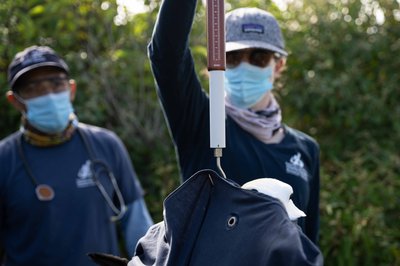
Observing the strenuous efforts of the team, I surprised myself by diving in more than expected. Conservation work is frequently romanticized, set in exotic places and involving charismatic species like the ones we encountered. However, lesson three: the truth behind it is gritty, often involving tough labor in challenging environments, with personal sacrifices made over extended periods.
Yet, it holds immense significance for the long-term conservation of these migratory species in a world where human pressure is escalating. It can also be the kind of work that nourishes your soul and provides you with a profound sense of purpose.
THE IMPORTANCE
The Charles Darwin Foundation’s Marine Bird Conservation study has run over 15 years, which is truly remarkable as ensuring funding for long-term studies can be difficult.
Long-term monitoring is fundamental for effective wildlife conservation, providing the necessary information to protect species and maintain ecological balance. More specifically, it helps us:
- Track population trends and survival: reveals whether species are increasing, decreasing, or stable, which is vital for assessing population health.
- Provide behavioral and ecological insights: Provides critical information on animal behavior, reproduction, migration, and ecological relationships.
- Detect environmental changes: helps identify impacts from climate change, pollution, habitat changes, and human activities, aiding in conservation strategies.
- Evaluate conservation efforts and policies: assesses the effectiveness of conservation measures and management practices, allowing for necessary adjustments.
- Detect emerging threats: helps detect disease outbreaks or other threats, enabling timely responses.
- Evaluate biodiversity and ecosystem health: indicates the health of ecosystems since animals are integral parts of them.
- Strengthen educational and public awareness: enhances education and public support for conservation through compelling data and stories.
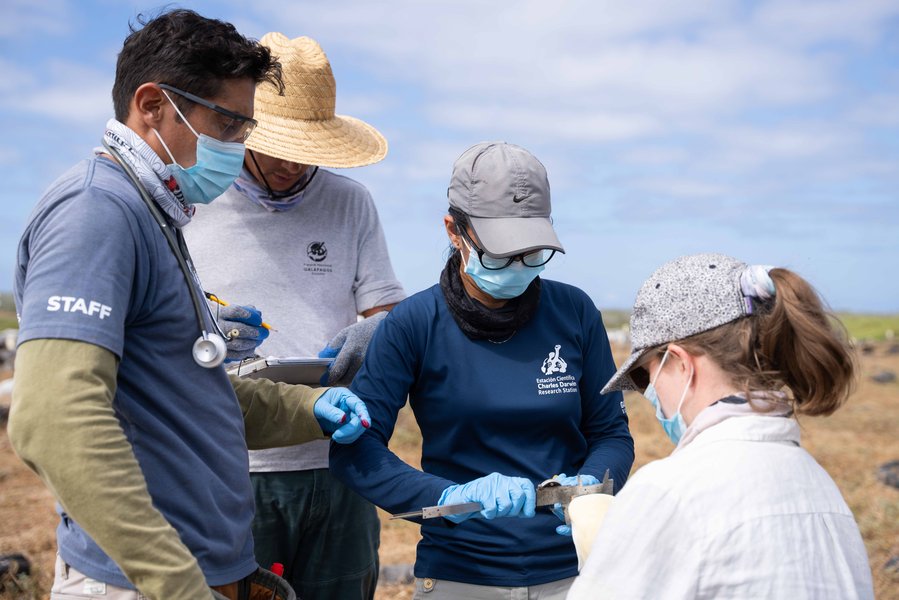
Be part of this story and contribute to the long-term conservation of these species by supporting our program with a donation. For more details, please get in touch with us at fundraising@fcdarwin.org.ec




